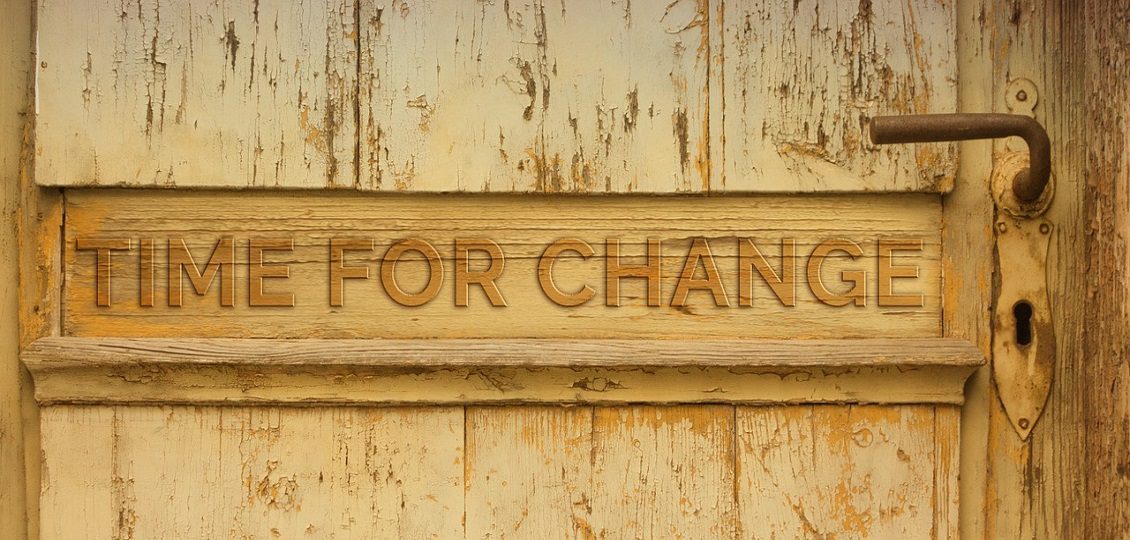By Everlyne Bakhoya
If you were asked what the most important asset for your business is, you would probably think of the huge sacrifice in form of capital that you made, your equipment, technology, unparalleled marketing strategy, excellent customer service or even your intellectual property. While all these are important in giving the business an added advantage, the key asset a company needs to link together the other assets is the Human Asset. The rest will all need a human hand to get them moving, don’t you agree?
We find that in most cases, the success or failure of an enterprise will largely be proportional to the quality of its human resource. Any plans to move the business forward will heavily lean on the caliber of the human resource.
However, this is an asset whose environment is constantly changing. Its many facets are never fixed. Thus, the quality and morale of the human resource need to be monitored on a continual basis as the internal and external environment surrounding the business keeps evolving.
There are many change issues that affect this very important resource. In turn, this affect its quality, morale, productivity and ultimately the business’ productivity and success. This article tackles the most critical contemporary change issues affecting HR and how to manage them. These will include:
- Cross generational challenges.
- Technological advances and human resource asset.
- Need to align the human resource strategy with the overall business strategy.
- Need to be a change agent.
- Measuring the value of the human resource asset.
Cross-Generational ChallengesNever before has there been a cross generation of people working in the same organization as it is today. The many ideas, opinions and ways of doing the most basic of things can be baffling, to say the least. Talk of baby boomers, generation X, Y and the Millennial, all are to be found in today’s work environment. While the baby boomers are beginning to retire, the rest are now mandated to take up management positions that are being left vacant.
Intergenerational conflicts are likely to occur as the values, priorities, focus, education and upbringing of these generations are way apart. The younger generation is less concerned with loyalty – as opposed to the older generation – and more concerned with what the company can do for them.
Some of the characteristics that are common in the younger generations, and especially the millennials who are the majority, include:
- The fact that they are highly educated and risk averse;
- They are technologically savvy;
- Conscious (of health, social, economic and environmental issues);
- They value transparency and open communication;
- Most are entrepreneurial;
- Their constituent is such that they are diverse in terms of race, tribe etc;
- They are the microwave generation who ‘want it now’, impatient and adventurous;
- Millenials want to stay true to whom they are and their individuality and they are global citizens, not to be confined to a certain culture.
On the other hand, the older generation is largely opposite. Most of our parents are jealously loyal to their employers and even their stories after retire are of nostalgic fond memories of their jobs. Which stories is your daddy, mummy or grannies fond of?So how is an employer to handle such diversity between the generations? Below are some ways that organizations have used and can use in handling the multi-generational issues:
- Encouraging the expression of the younger generation’s creativity, education and enthusiasm by creating innovation hubs.
- Creation of mentorship programmes where the older employees mentor, coach and nurture the younger.
- Knowledge retention efforts – by allowing the older employees to retire but still continue working. Knowledge management should also be embraced whereby knowledge is centralized and easily accessible.
- Leadership training to transition the Millenials into leadership positions.
- Embracing up to date technology to enable the Millenials feel at home and become more productive, while training their ‘Parents’ to become more technology friendly. Things like the Intranet and IT Systems are worth a try.
- Decentralization – This enables the older ones to learn new things and the ever adventurous Millennials to explore new areas.
- Talent management – This enables employees to stay true to their authenticity and fit into their area of expertise.
- Unity in diversity – Allowing employees from different backgrounds to work together rather than segregating them.
- Work-life balance – This can be done through such plans as flexi-time; employee welfare programmes, holidays and leaves.
- Transparency and clear communication- This enhances understanding between management, the older and the younger generations.
Technological Advances and Human ResourceIn today’s post modern organization, technology is at the core. An organization will either embrace technological advances to stay relevant or die off. The human resource or people are the drivers of this technological change, and so the HR Department is critical in all this. It is predicted that Millennials, (the tech-savvy generation), will make up 75% of the workforce by 2020. This confirms that there is no running away from technology.
From the remotest villages of Africa and Asia to the big cities of America and Europe, cell phones, the internet, and wireless services are becoming common place and have completely changed every aspect of life from the home to the workplace. The letter ‘e’ is now the in-word. Talk of e-commerce, e-learning, e-farming and the list is endless.
It is now paramount that the Human Resource department fully adapt to technology to march forward with the rest of the business enterprise. Social media is now being used in recruitment by a large number of employers, and it has been established that almost 90% of the recruiters turn to this same Social media to identify and counter check candidates.
Telecommuting is now becoming more popular as employers and employees seek to strike a work-life balance and to reduce real estate costs. Traditional aspects of HR like welfare and benefits delivery, payroll administration and record keeping have already been automated by many through the Human Resource Information Systems (HRIS) while some are being moved to outsourced vendors.
Having automated the basic HR functions, it would now be prudent for HR department to focus on the more advanced human resource functions. This would include automated employee development, change management, knowledge management and strategic partnerships. Online training will help keep employees up to speed with the corporate pace.
Competitive recruitment and retention programs and systems would help keep up with the current dynamic and volatile recruitment environment. Not to be left behind are tailored compensation plans to match the changing recruitment scenario. Automated talent analytics and workplace analysis will also become a common activity.
Aligning Human Resource Strategy with the Overall Business Strategy
Being a strategic partner means aligning the Human Resource function to meet the needs of both employees and employer. It is ensuring that the corporate strategy and goals are the focus of all departments and are achieved.
This is not just a function of the HR department but rather, it involves all other managers – given the vital role of people in an organization. HR performance is increasingly being measured in terms of its strategic impact. The managers need to understand the overall strategy and goals of the business and provide employees with the skills and resources needed to achieve these goals.
Areas that HR department and other managers need to address to ensure they are at par with the overall business strategy include:
- Leadership – A strong leadership that is versatile and easily connects the employee to the employer needs to be adopted.
- Competence – To what extent does the organization have the required skills, knowledge and abilities?
- Training and adaption to Change – The level to which employees can respond and adapt to change and uncertainty as fast as possible.
- Communication and Transparency – Does information flow easily and with transparency from top to bottom and vice versa?
- Structures and Systems – Are these functional in such a way that will create a high-performing organization?
- Compensation – Are the employees’ efforts appropriately being rewarded in line with the organization’s strategy?
- Creativity and future orientation – Is technology and innovation that will help achieve organizational goals being fully embraced?
- Quality delivery – Is the ultimate quality being delivered to the customers to facilitate strategy realization?
Need to be a Change Management AgentChange is inevitable. It has been said that “the only thing that does not change is change”. Change helps a business to remain relevant and gain a competitive edge. Change management is defined as the process, tools and techniques to manage the people-side of change to achieve the required business outcome.
The Human Resource department is at the centre of managing the people aspect of change. It holds a strategic role in implementing the organization’s transition towards change. This is through although not limited to:
- Providing employees with the proper skills and training to handle any foreseeable change;
- Diagnosing and providing possible solutions to employee problems before they become serious or even before they occur;
- Resourcing for change,
- Reward, learning and communication programmes that will help in achieving the organizational strategy;
- Handling downsizing and restructuring issues when need arises.
Measuring the value of the Human Resource AssetAs forward looking organizations spend huge sums in developing their workforce and in turn their overall organization performance, the challenge becomes how to measure the return on this vital asset. Given its intangible nature, assigning a value on the balance sheet becomes a real challenge. However, some institutes like the Human Capital Management Institute (HCMI) has developed a number of tools called Human Capital Financial Statements to express the value.
The best way to measure human capital is to know why you are doing it rather than just doing it as best practice. There is no one straight-forward or scientific way of measuring human capital because of its intangibility and the fact that it is affected by many variables.
A few simple and relatively straight forward ways to measure human capital contribution are however outlined below:
1. Return On Investment = Total Organizational Profits X 100
Investment on Human Capital
“Total Organizational Profits” is what your company has made in profits after it covered all of its expenses, while “Investment on Human Capital” refers to the amount of money your organization has put in to develop its human capital; i.e. recruitment and selection, training and development, compensation, etc.
2. Skills Inventory – This keeps a database of skills that the entire organization’s workforce has and assigns relative values to the skills depending on the importance of each skill to the organization’s strategic goals.
3. Personality – There are a number of professional bodies that offer Psychometric tests which align an employee’s personality to their most suitable area of expertise or delivery. The tests measure an employee’s personality, their strengths and weaknesses and propose where they may best fit.
Final Thoughts
The human resource is a dynamic resource. People change and the variables surrounding their ability to deliver also change frequently. Those managing people (not only the HR department) ought to be always aware of the dynamics of the workforce and to put in place appropriate measures to adopt so that change does not leave the organization behind in the pursuit of its goals.
Cross generational challenges ought to be addressed to bring unity in purpose. No generation is superior to the other but they all have something to offer. Almost all commerce is now pegged on technology and the Human Resource department cannot be left behind.
The CEOS are now asking each department “What is your Bottom Line?” what is your contribution to the overall business strategy and is it measurable? Therefore HR Department needs to work harder to address these questions. It is inevitable that the department acts as a change management agent beginning within and facilitating the entire organization’s change in their quest for organizational success.
About
Everlyne Bakhoya is a freelance writer who is passionate about research across board. This include, but is not limited to fields such as health issues, lifestyle issues, business & finance, history, christian religion, politics & economy etc.
I also love sharing what I have learnt to help change and mould society positively.











































